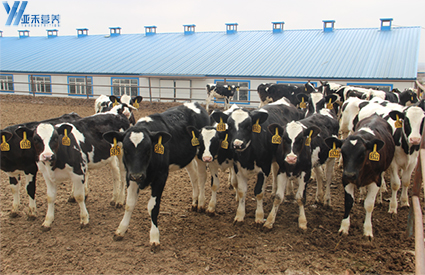On November 14, local time, a magnitude 7.5 earthquake occurred in the central region of New Zealand's South Island and triggered a 5 meter high tsunami. It can be said that the central area of the earthquake happened to cover most of the dairy farms. New Zealand is a major milk source base in the world and a major source of imported milk in China. From January to September, China imported a total of 152,681 tons of infant formula milk powder, of which 16726 tons were imported from New Zealand, accounting for about 11%. If a large package of powder is added, the proportion will be greater.
China's investment in factories in New Zealand is not affected
According to local reports in New Zealand, almost all dairy farms from the epicenter to the northern Kaikoura area are in disarray. Due to the interruption of the power supply due to the earthquake, the dairy farms in this area are in a state of power outage and water outage and cannot produce. It is now the season for cows to mate. If the farm stops now, it will affect the milk production of the next year.
In recent years, Chinese dairy companies have implemented the strategy of going global. Yili and Yashili both invested and built factories in New Zealand. Song Liang, a senior analyst with the dairy industry, said that the Yashili plant in North Island has not been affected in any way. Erie is in South Canterbury, farther from North Canterbury.
Nandu reporters also learned from the above companies, and the other parties said that the factory is operating normally. Among them, Yashili said that the company's factory is located in the Waikato area on the North Island of New Zealand, far away from the earthquake source, and the factory's earthquake resistance level is high. Now the cattle and sheep are in a stable mood.
Global dairy prices may rise
“Currently, New Zealand ’s South Island dairy cattle account for 39.8% of the country ’s total, and the North Island accounts for 60.2%. The largest impact in the earthquake is in the North Canterbury region, which accounts for 13.4% of the new country. In addition, there are four to five regions in New Zealand that are affected to varying degrees. These regions have 26% of the total cows. In addition, railway roads have also caused damage, preventing milk from being delivered to the factory in time. "Song Liang, a senior analyst at the dairy industry It is believed that because New Zealand is in the peak milk production season, the earthquake caused a reduction in production, which affected prices. "The entire dairy product price is in a rising channel, and the production cut caused by the earthquake will further consolidate the price increase."
In an interview with Nandu reporter, Dr. Song Yapan, technical consultant of Songshan Association, said that the dairy plant in the affected area has been shut down and the equipment has been damaged. "Some people predict that production will drop by 5%, and I think the impact may be even greater. In the short term, such as 1 to 2 months, there will be a loss of 10% to 20%. In the long run, in half a year to a year, the loss There will be 5% -10%. "
He said that the earthquake will also affect the breeding of local cows. The tsunami caused by the earthquake will also cause the risk of epidemic. "In the future, New Zealand's milk powder export volume will decrease, which will further increase the global auction price of dairy products, especially the last one or two auctions, the increase will be relatively large."
For the impact of the Chinese market, he said that due to China's strict investigation of reconstituted milk, the import volume was small, and the price of domestic raw milk was rising. The earthquake caused a reduction in milk production in New Zealand and a further reduction in exports to China. "This will be good for the Chinese aquaculture industry. In the next three to five months, it will encourage processing companies to use a large amount of domestic raw milk, which will be an incentive for the development of the domestic aquaculture industry."





